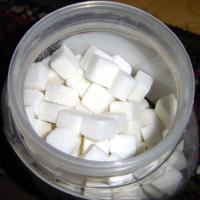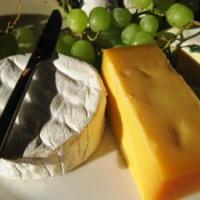Sweetners Information
![]()
Sweetener Information
By Doreen Sugar by Any Other Name In chemistry, the ending "ose" indicates sugar; so beware of ---ose ingredients on food labels . Talbe sugar, the white granulated type, is known as sucrose. Here is a list some of other names of sugars you might encounter:
"ose" sugars are pure carb, thus 1 gram of sugar = 1 gram of carbohydrate = 4 calories.
Look for these other commonly used sugar-carbohydrate ingredients :
**Beware of foods that boast no-added sugar, or sucrose-free. Read the label carefully; many foods such as jams and fruit drinks are sweetened with concentrated grape or apple juice, which are very sweet, high-fructose syrups, and yield the same carb and calorie count as sucrose (table sugar).
***Note that "sucralose" (Splenda) ends in ---ose, because it is made from sucrose sugar, but it is calorie and carb-free. Actually, you might want to think of it as ending in "lose" instead!!
Fructose
Fructose is sometimes promoted as a suitable sweetener for diabetics and low carbers because it does not require insulin to be used by the cells; thus there is no rise in insulin level. However, it is still a carbohydrate and yields 4 calories per gram, just like any other sugar. Fructose has an added disadvantage - because it doesn't require insulin, it is rapidly absorbed by the liver and converted to glycerol - ultimately leading to increased triglycerides and cholesterol levels. There are also studies showing that fructose also contributes to insulin-resistance. While fructose occus naturally in fruits and vegetables, it is present in relatively small amounts, and the fiber, pectin and minerals in these foods balance the fructose content. The fructose that is added to commercially processed food is a highly refined, purified sugar created in a lab from corn and other syrups. It is everywhere - fruit drinks, soft drinks and iced teas, baby foods (yes!), jams and jellies, candies, desserts and baked goods.
Artificial Sweeteners
As a group, artificial sweeteners are classed as "non-nutritive". Thus, they provide a sweet sensation to the tastebuds, without raising blood sugar levels or insulin, and are useful for weight-loss because they are calorie- and carbohydrate-free.
The most common artificial sweetener in use is aspartame (Equal, Nutrasweet). Aspartame is calorie- and carb-free, however it is far from being an ideal sweetener. First, it is not chemically stable, meaning that when exposed to heat and air, it breaks down into its chemical constituents - phenylalanine and aspartic acid. This makes it unsuitable for cooking, or for storage over more than a couple of days. Also, many people have experienced unpleasant symptoms from consuming aspartame, from mild headaches and stomach upset to migraines and depression. The manufacturers continue to assert that the product is safe, and indeed most people can enjoy it without any problem whatsoever. Moderation is the key.
In Canada, food and beverage manufacturers are using a combination approach in their products - using aspartame with another sweetener, acesulfame-potassium (Ace-K, Sunette). This sweetener is not absorbed and yields zero carbs and calories. It has a bitter after-taste, but when combined with another sweetener, this is eliminated. By combining sweeteners, an improved sweet taste is achieved, and reduced amounts of each chemical is required.
Sucralose (Splenda) is spun from regular sucrose sugar in such away that the body doesn't recognise it, so it is not absorbed. Thus it contributes no calories or carbohydrates in its pure form. It remains stable in heat, so is ideal for cooking and baking. Splenda is available for home use as a bulk sweetener, which measures spoon for spoon exactly the same as sugar. It is also available in a more concentrated form in convenient packets. However, these Splenda products also contain maltodextrin, which gives it the necessary bulk. Thus, it does contribute a small amount of calories and carbohydrate. Either form of Splenda, whether it's the bulk form in the box, or the little packets, will yield 0.5 carb grams per amount equivalent to 1 tsp (5 ml) of sucrose sugar. Just remember that the powder in the little packets is much more concentrated, so a smaller volume is needed to give the desired sweetness.
More and more commercial products made with Splenda are becoming available - especially beverages, soft drinks and iced teas, desserts, condiments and candies. Keep an eye on your grocer's shelves. Also visit our Shopping Page for some popular products available in Canada.
Also available in Canada is cyclamate (SugarTwin, Sucaryl), a zero-calorie/carb sweetener. There is still some controsversy that this chemical may cause bladder cancer in rats; it has never occured in humans in over 30 years of study. It is still banned in the US. Cyclamate is not used in commercial products, and is only available as a "table top" sweetener. It comes in bulk form, measured spoon for spoon like sugar, or as concentrated packets, tablets and liquid, There is also a brown sugar flavour, which some enjoy. Cyclamate is stable in heat, so is fine to use in cooking and baking.
Stevia
This is a non-caloric, zero-carb natural sweetener, derived from a South American plant stevia rebaudiana, and has been in wide use in Asia for some years now. It's becoming more readily available in North America; look for it in health food and natural food stores. So far, it appears to be well-tolerated, with no reports of negative effects. It is available as a liquid extract - either concentrated or dilute, a white crystalline powder made from the extract or simply the powdered green herb leaf. It provides an intense sweet taste, which has the potential to be bitter. Some people find it has a slight anise/licorice flavour which may or may not be objectionable. Also, some studies suggest that it may possibly stimulate the release of insulin; in Protein Power Lifeplan, the Eades' recommend using stevia with caution. It is stable in heat, so is fine to use in cooking.
Maltitol, Sorbitol and Other Sugar Alcohols
Sugar alcohols - also called polyols - are a class of carbohydrate that are neither sugars nor alcohols. This group includes maltitol, sorbitol, mannitol, xylitol, erythritol, lactitol, and hydrolysed starch hydrolysates (HSH). These popular sugar substitutes provide the bulk and sweetness of sugar and corn syrup, but are incompletely absorbed in the intestine. Thus they provide fewer calories and carbs than sugar, and result in a much slower, and smaller rise in blood sugar and insulin. They are generally recognised as safe for diabetics to consume for this reason, and products sweetened with these products may legally be labelled "sugar-free" in both Canada and the US. Sugar alcohols do not promote oral bacteria, and xylitol in fact inhibits bacterial growth, thus do not cause tooth decay.
There is a great deal of confusion about whether or not these products provide carbohydrates, and how they should be counted toward a carbohydrate-restricted diet. Some authorities say they provide zero carbs because they are not absorbed. Others, such as Diabetic Associations across North America, are taking a more cautious stand. Currently, food labelling regulations in Canada and US do not require (yet) including maltitol et al in the Total Carbohydrate data of the nutrients list. However, the amount must be listed in the ingredients panel.
So how do you count them in your carb budget for the day? Some say 0 carbs, so just go by the label and only count the carbs from any sugar or starch in the food. Others, such as the Canadian Diabetes Association, recommend counting the full amount as carbohydrate grams, especially for patients using carb-counting for insulin dosage and insulin pumps. Still others take a median approach, and suggest counting each gram of maltitol as 0.5 carb grams.
All authorities recommend using caution and definitely moderation is key. Because they are not completely absorbed in the bowel, they have a nasty reputation of holding onto water, and promoting diarrhea, gas and bloating. This is politely termed the "laxative effect". Sorbitol and mannitol are the worst offenders, maltitol and lactitol less so. The label should indicate the serving size. This is the amount considered safe to eat before the laxative effect takes over. So beware that overeating these foods can have serious effects. Especially for children, who of course will experience the effect from an even smaller amount.
Many low carbers enjoy an occasional chocolate bar or candy sweetened with one of the sugar alcohols, and find there is no effect on their weight loss or ketosis. Some do find it will put them in a stall. Others find they definitely experience a blood sugar "rush" from eating even a small amount. For a few, the laxative effect is pronounced, and even a small amount will trigger unpleasant symptoms. This is definitely a case of YMMV (your mileage may vary). For some low carbers, planning for one of these treats now and then helps to stave off cravings for serious carb binges. Indeed, even at full count, a 40 gram chocolate bar sweetened with maltitol has an average of 12 carb grams, as opposed to regular plain chocolate with 25 carbs in a similar sized bar. Just beware that they can also trigger the sweet cravings you hope to avoid.
For more information about sugar and sugar substitutes, please check the following resources:
the Canadian Diabetes Association, "Sweeteners"
the Calorie Control Council, "Low Calorie Sweeteners"
Happy Low Carbing!
- Prev:Carb Cravings
- Next:Low Carb Basics
-
What You Need to Know Before Starting a Low Carb Diet
In the last 12 months or so, low ... diets have captured th
-
Attitude: The Forgotten Power
What would you consider is your most valuable tool for stay
-
Low Carb, Low Fat Chicken Fingers
Goo
-
Trimspa Diet Reviews
Trimspa diet reviews have been coming in fast and furio
-
Low-carb Backlash - Is The Low-carb Cookie Crumbling?
Low-Carb Diets, such as the Atkins Diet and the South Beach Diet, can
-
Low-Carb Mix and Match Snacking
The
- DON'T MISS
- Critics of Low-Carb Diets
- Are Atkins Diet And Low Carb Diets Safe?
- Atkins Candy Bars
- Low Carb Diet Recipes ?Secret Ingredients to Fast Weight Loss!
- No Carb Diet Meal Plan
- Orange Almond Cake
- A Simple Low Carb Diet Plan
- Kvas
- How Low-Carb Diet Plans Treat Carbohydrates
- Daikon Pur閑 with Browned Balsamic Butter




